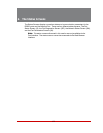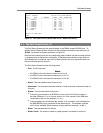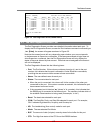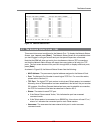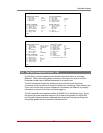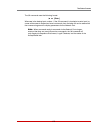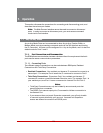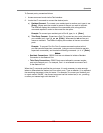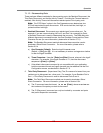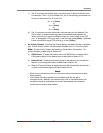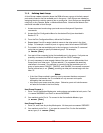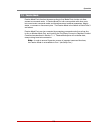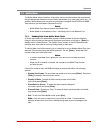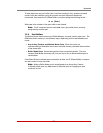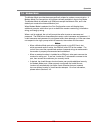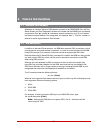
7-3
Operation
7.1.1.2. Disconnecting Ports
There are three different methods for disconnecting ports, the Resident Disconnect, the
Third Party Disconnect, and the No Activity Timeout. Providing the Timeout feature is
enabled, a No Activity Timeout will disconnect resident ports or third party ports.
Note: The "DTR Output" option in the Port Parameters menu determines how
DTR will react when the port disconnects. DTR can be held low, held high, or
pulsed and then held high.
1. Resident Disconnect: Disconnects your resident port from another port. For
example, if you are communicating via Port 3, and Port 3 is connected to Port 4,
a Resident Disconnect is used to disassociate the two ports. The RSM offers two
different disconnect command formats; the One Character Format and the Three
Character Format (for more information, please refer to Section 5.7.2.):
Note: The Resident Disconnect methods discussed here cannot be used to
terminate a Telnet Direct Connection. For more information, please refer to
Section 8.3.4.
a) One Character (Default): Enter the logoff character once
(Default = [Ctrl] plus [X]). It is not necessary to enter a carriage return before
or after the logoff character.
b) Three Characters: Uses the "[Enter]LLL[Enter]" format, where L is the logoff
character. For example, if the logoff character is "+", then the disconnect
sequence is [Enter]+++[Enter].
c) If the default disconnect command is not compatible with your application,
both the command format and logoff character can be redefined via the Port
Configuration menus, as described in Section 5.7.2.
2. Third Party Disconnect: (Supervisors Only) The /D command is issued from your
resident port to disconnect two other ports. For example, if your Resident Port is
Port 1, a Third Party Disconnect is used to disconnect Ports 3 and 4.
Note: The Third Party Disconnect method can be used to terminate a Telnet
Direct Connection. For more information, please refer to Section 8.3.4.
a) The /D command uses the format: /D xx XX [Enter], where xx and XX are
the numbers of the ports you wish to disconnect.
b) The /D (Disconnect) command can only be invoked by accounts and ports
that permit Supervisor commands.



